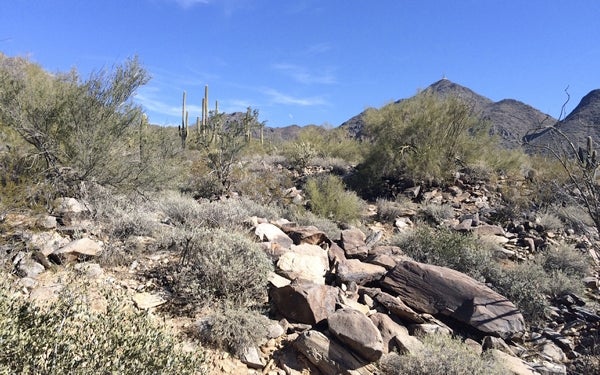Amy-Lynn Albertson: Saguaro cactus is fascinating
Published 12:00 am Friday, January 29, 2016

- Cooperative Extension Saquaro cactus grow in the Sonoran Desert, which is in Arizona, California and Mexico.
I am finally able to get up my driveway again as we recover from the winter weather. Through all of this, I am trying to hold on to my memory of hiking in the Sonoran Desert near Phoenix two weeks ago. I was lucky enough to travel to Phoenix for the holiday weekend to visit some very dear friends.
The landscape of the west is very different from the southeast to say the least. A plant that fascinates me to no end is the cactus. The iconic saguaro (pronounced “sah-wah-roh”) only grows in the Sonoran desert of Arizona and Mexico, although its silhouette is used on just about everything to describe the southwest.
The saguaro is the largest cactus in the US, and will regularly grow to 40 feet tall. The tallest saguaro cactus ever measured was more than 78 feet tall. This cactus grows as a column at a very slow rate — it can take 10 years for it to grow an inch.
By the time the cactus reaches 70 years old, it will be about 6 feet tall and may start to produce flowers. At age 95-100, a saguaro should be around15-16 feet tall and might produce its first arm. At 200 years, the saguaro has reached maturity and, while some have been seen with dozens of arms, others may never produce one at all.
The saguaros soak up rainwater and then visibly expand. It conserves the water while it slowly absorbs it. The inside of the cactus is filled with spongy tissue which is used to hold water. At full capacity, a foot of saguaro cactus can weigh as much as 90 pounds. A fully grown saguaro can weigh more than a ton.
The thick skin of the saguaro is covered with a thick, waxy coating that waterproofs the plant and reduces the amount of water lost to the dry air through transpiration.
The roots of the saguaro are only 4to 6 inches deep and spread out as far from the plant as it is tall. It also has one deep tap root that usually goes about 2 to 5 feet deep.
The arms of the saguaro increase the plant’s ability to produce flowers and fruit. In late spring through early summer, the cactus will produce milky white flowers. These flowers produce a sweet nectar that attract several species of bats. The bats eat the nectar, and act as pollinators for the cactus. As the cactus produces fruit, the bats eat that, too, and in turn help spread saguaro seeds across the desert.
After the saguaro dies, its woody ribs are used to build roofs, fences and parts of furniture. The holes that birds have nested in are called “saguaro boots.” Native Americans would use these as water containers long before the canteen was available.
It was wonderful to hike in 70-degree weather and see these awesome desert beauties. If you get the chance to go to the Phoenix area, go to the McDowell Sonoran Preserve www.mcdowellsonoran.org. For more information about cacti or other horticultural topics please contact the Rowan County Extension Center at 704-216-8970 or http://rowan.ces.ncsu.edu.




